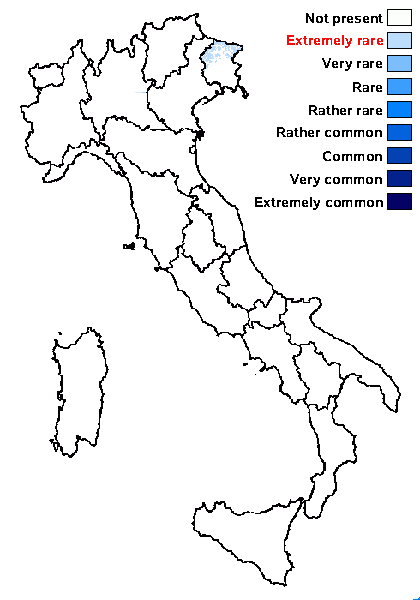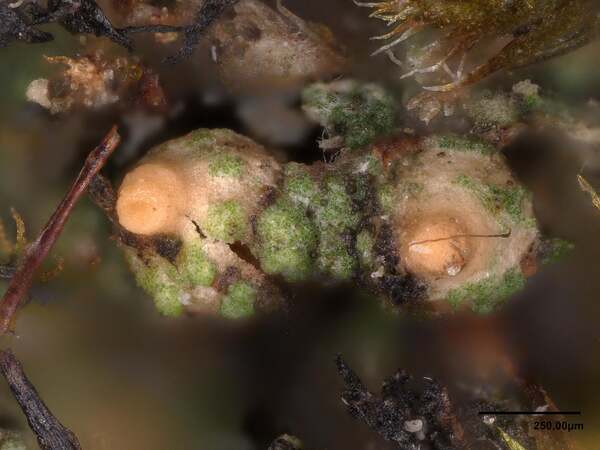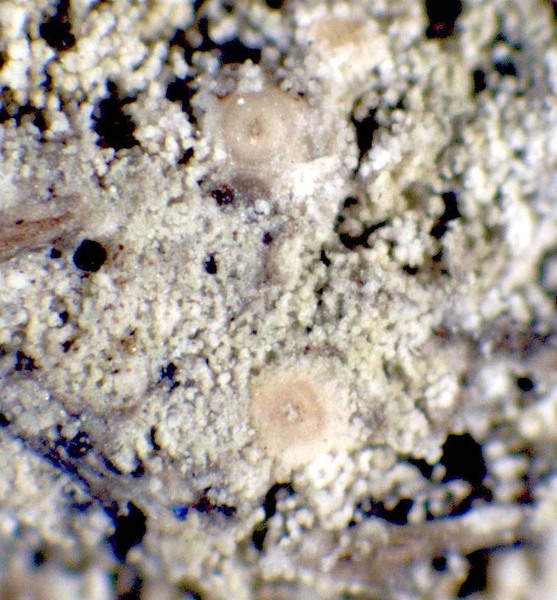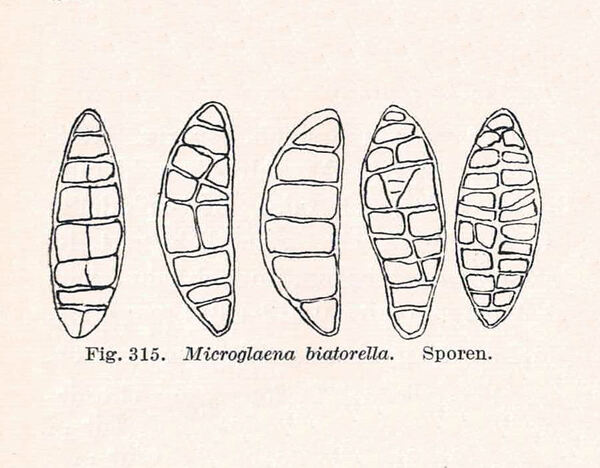Psoroglaena biatorella (Arnold) Lücking & Sérus.
in Lücking, Fl. Neotrop., Monogr., 103: 193, 2008. Basionym: Microglaena biatorella Arnold - Verh. zool.-bot. Ges. Wien, 23: 501, 1873.
Synonyms: Leucocarpia biatorella (Arnold) Vězda
Distribution: N - Frl.
Description: Thallus crustose, episubstratic, greenish white to yellowish white, thin, smooth to mostly granulose-verrucose, the granules soredia-like. Perithecia globose to pear-shaped (with a short neck near the ostiole), (0.2-)0.5-0.6(-0.8) mm across, at least half covered by a thalline layer, pale yellow to pale pink, with a darker, yellowish or yellowish-pinkish ostiolar region. Exciple pale ochraceous pink throughout, of tangentially arranged hyphae, 40-60 µm thick; involucrellum absent; hamathecium of branched periphyses measuring 60-70 x c. 1 μm, interascal filaments absent; hymenial gel I+ red, K/I+ blue. Asci 8-spored, fissitunicate, thick-walled, clavate-cylindrical, with a thick tholus, K/I-. Ascospores at first 3-septate, then rapidly submuriform, with up to 9 transverse septa and up to 6 longitudinal septa, hyaline, ellipsoid, (25-)28-38(-45) x (10-)11-14 μm. Photobiont chlorococcoid. Spot tests: K-, C-, KC-, P-, UV-. Chemistry: without lichen substances. Note: an inconspicuous lichen found on thin layers of more or less calciferous, humus-rich ground, or over epilithic mosses, mostly in upland areas; probably overlooked and more widespread, but never common, in the Alps.
Growth form: Crustose
Substrata: rocks, soil, terricolous mosses, and plant debris
Photobiont: green algae other than Trentepohlia
Reproductive strategy: mainly sexual
Commonnes-rarity: (info)
Alpine belt: absent
Subalpine belt: extremely rare
Oromediterranean belt: absent
Montane belt: extremely rare
Submediterranean belt: absent
Padanian area: absent
Humid submediterranean belt: absent
Humid mediterranean belt: absent
Dry mediterranean belt: absent

Predictive model
Herbarium samples
Growth form: Crustose
Substrata: rocks, soil, terricolous mosses, and plant debris
Photobiont: green algae other than Trentepohlia
Reproductive strategy: mainly sexual
Commonnes-rarity: (info)
Alpine belt: absent
Subalpine belt: extremely rare
Oromediterranean belt: absent
Montane belt: extremely rare
Submediterranean belt: absent
Padanian area: absent
Humid submediterranean belt: absent
Humid mediterranean belt: absent
Dry mediterranean belt: absent

Predictive model
| Herbarium samples |
 INDEX FUNGORUM
INDEX FUNGORUM
 GBIF
GBIF
 DOLICHENS
DOLICHENS






